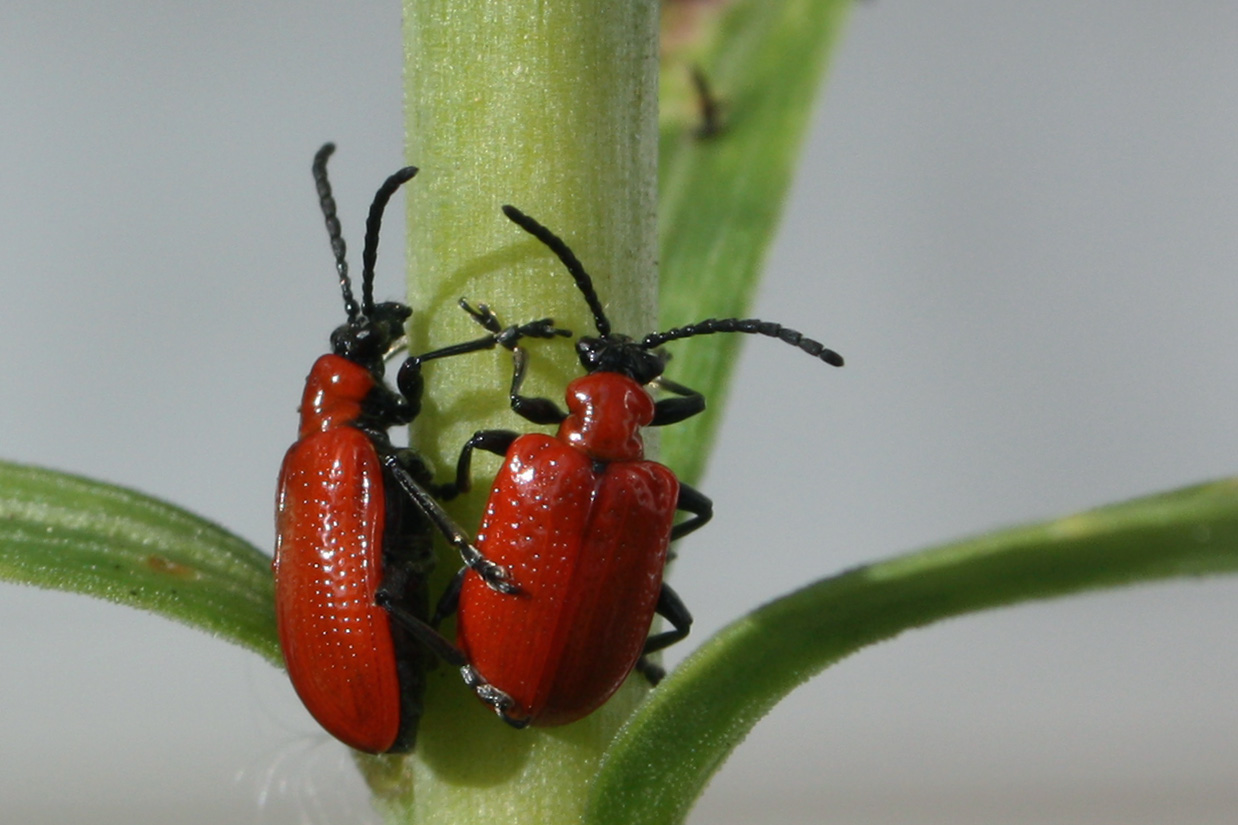|
Wibel
August Wilhelm Eberhard Christoph Wibel (1775, Ernsbach near Öhringen – 1814, Wertheim am Main) was a German physician and botanist. He was a student at the University of Jena, earning his medical doctorate in 1797. Later, he worked as a physician in the city of Wertheim am Main. He described a number of plant species, and is the taxonomic authority of the genus ''Sciophila'' (family Liliaceae). The fern genus '' Wibelia'' (family Davalliaceae) was named in his honor by Johann Jakob Bernhardi Johann Jakob Bernhardi (1 September 1774, in Erfurt – 13 May 1850, in Erfurt) was a German doctor and botanist. Biography Johann J. Bernhardi studied Medicine and Botany at the University of Erfurt, and after graduation practiced medicine for a .... Principal works * Primitiae florae Werthemensis, 1799. * ''Beyträge zur Beförderung der Pflanzenkunde: Ersten Bandes erste Abtheilung'', 1800 - Contributions to the advancement of botany. [...More Info...] [...Related Items...] OR: [Wikipedia] [Google] [Baidu] |
Davalliaceae
'' Davallia'' (deersfoot fern, hare's foot fern, shinobu fern, rabbit foot fern, ball fern) is a genus of about 40 species of fern. In the Pteridophyte Phylogeny Group classification of 2016 (PPG I), it is the only genus in the family Davalliaceae, which is placed in the suborder Polypodiineae, order Polypodiales. Alternatively, the family may be placed in a very broadly defined family Polypodiaceae ''sensu lato'' as the subfamily Davallioideae. The family is sister to the largest family of ferns, Polypodiaceae, and shares some morphological characters with it.Karl U. Kramer. 1990. "Davalliaceae". pages 74-80. In: Klaus Kubitzki (general editor); Karl U. Kramer and Peter S. Green (volume editors) ''The Families and Genera of Vascular Plants'' volume I. Springer-Verlag: Berlin;Heidelberg, Germany. Species are epiphytic ferns, with fronds arising from long aerial rhizomes which grow on and over thick bark on trees or on rock crevices. Description Usually epiphytic or epip ... [...More Info...] [...Related Items...] OR: [Wikipedia] [Google] [Baidu] |
Öhringen
Öhringen ( East Franconian: ''Ähringe'') is the largest town in Hohenlohe (district) in the state of Baden-Württemberg, in southwest Germany, near Heilbronn. Öhringen is on the railline to Schwäbisch Hall and Crailsheim. With a population of 24,374 (2019), the town is diverse. It is a quaint medieval place, and, among its ancient buildings, boasts a fine Evangelical church (german: Stiftskirche) containing carvings in cedar-wood from the 15th century and numerous interesting tombs and monuments; a Renaissance town hall; the building, now used as a library, which formerly belonged to a monastery, erected in 1034; and a palace, the former residence of the princes of Hohenlohe-Öhringen. ''Vicus Aurelii'' to the Romans. Eastwards of it runs the old limes Roman frontier wall, and numerous remains and inscriptions dating from the days of the Roman settlement have been discovered, including traces of three camps. Geography Geographical location Öhringen is located in the w ... [...More Info...] [...Related Items...] OR: [Wikipedia] [Google] [Baidu] |
Wertheim Am Main
Wertheim ( East Franconian: ''Wärde'') is a town in southwestern Germany, in the state of Baden-Württemberg with a population of around 23,400. It is located on the confluence of the rivers Tauber and Main. Wertheim is best known for its landmark castle and medieval town centre. Geography Wertheim is the most northerly town in the state of Baden-Württemberg. It is situated at the confluence of the rivers Tauber and Main, on the Main's left bank. It borders on the Odenwald hills and the Spessart range to the north across the river Main. Wertheim is located in the Main-Tauber district. Neighboring communities The following towns and communities border on Wertheim, listed clockwise starting in the east: Holzkirchen, Helmstadt and Neubrunn (all district Würzburg, Bavaria), Werbach and Külsheim (both Main-Tauber district), Neunkirchen ( district Miltenberg, Bavaria), Freudenberg (Main-Tauber district), Stadtprozelten and Faulbach (both Miltenberg district) and Haslo ... [...More Info...] [...Related Items...] OR: [Wikipedia] [Google] [Baidu] |
Botanist
Botany, also called plant science (or plant sciences), plant biology or phytology, is the science of plant life and a branch of biology. A botanist, plant scientist or phytologist is a scientist who specialises in this field. The term "botany" comes from the Ancient Greek word (') meaning " pasture", "herbs" " grass", or "fodder"; is in turn derived from (), "to feed" or "to graze". Traditionally, botany has also included the study of fungi and algae by mycologists and phycologists respectively, with the study of these three groups of organisms remaining within the sphere of interest of the International Botanical Congress. Nowadays, botanists (in the strict sense) study approximately 410,000 species of land plants of which some 391,000 species are vascular plants (including approximately 369,000 species of flowering plants), and approximately 20,000 are bryophytes. Botany originated in prehistory as herbalism with the efforts of early humans to identify – ... [...More Info...] [...Related Items...] OR: [Wikipedia] [Google] [Baidu] |
University Of Jena
The University of Jena, officially the Friedrich Schiller University Jena (german: Friedrich-Schiller-Universität Jena, abbreviated FSU, shortened form ''Uni Jena''), is a public research university located in Jena, Thuringia, Germany. The university was established in 1558 and is counted among the ten oldest universities in Germany. It is affiliated with six Nobel Prize winners, most recently in 2000 when Jena graduate Herbert Kroemer won the Nobel Prize for physics. In the 2023 Times Higher Education World University Rankings, the university was awarded 189th place in the world. It was renamed after the poet Friedrich Schiller who was teaching as professor of philosophy when Jena attracted some of the most influential minds at the turn of the 19th century. With Karl Leonhard Reinhold, Johann Gottlieb Fichte, G. W. F. Hegel, F. W. J. Schelling and Friedrich Schlegel on its teaching staff, the university was at the centre of the emergence of German idealism and early ... [...More Info...] [...Related Items...] OR: [Wikipedia] [Google] [Baidu] |
Binomial Authority
In taxonomy, binomial nomenclature ("two-term naming system"), also called nomenclature ("two-name naming system") or binary nomenclature, is a formal system of naming species of living things by giving each a name composed of two parts, both of which use Latin grammatical forms, although they can be based on words from other languages. Such a name is called a binomial name (which may be shortened to just "binomial"), a binomen, name or a scientific name; more informally it is also historically called a Latin name. The first part of the name – the '' generic name'' – identifies the genus to which the species belongs, whereas the second part – the specific name or specific epithet – distinguishes the species within the genus. For example, modern humans belong to the genus ''Homo'' and within this genus to the species ''Homo sapiens''. ''Tyrannosaurus rex'' is likely the most widely known binomial. The ''formal'' introduction of this system of naming species is credit ... [...More Info...] [...Related Items...] OR: [Wikipedia] [Google] [Baidu] |
Liliaceae
The lily family, Liliaceae, consists of about 15 genera and 610 species of flowering plants within the order Liliales. They are monocotyledonous, perennial, herbaceous, often bulbous geophytes. Plants in this family have evolved with a fair amount of morphological diversity despite genetic similarity. Common characteristics include large flowers with parts arranged in threes: with six colored or patterned petaloid tepals (undifferentiated petals and sepals) arranged in two whorls, six stamens and a superior ovary. The leaves are linear in shape, with their veins usually arranged parallel to the edges, single and arranged alternating on the stem, or in a rosette at the base. Most species are grown from bulbs, although some have rhizomes. First described in 1789, the lily family became a paraphyletic "catch-all" ( wastebasket) group of lilioid monocots that did not fit into other families and included a great number of genera now included in other families and in s ... [...More Info...] [...Related Items...] OR: [Wikipedia] [Google] [Baidu] |
Fern
A fern (Polypodiopsida or Polypodiophyta ) is a member of a group of vascular plants (plants with xylem and phloem) that reproduce via spores and have neither seeds nor flowers. The polypodiophytes include all living pteridophytes except the lycopods, and differ from mosses and other bryophytes by being vascular, i.e., having specialized tissues that conduct water and nutrients and in having life cycles in which the branched sporophyte is the dominant phase. Ferns have complex leaves called megaphylls, that are more complex than the microphylls of clubmosses. Most ferns are leptosporangiate ferns. They produce coiled fiddleheads that uncoil and expand into fronds. The group includes about 10,560 known extant species. Ferns are defined here in the broad sense, being all of the Polypodiopsida, comprising both the leptosporangiate ( Polypodiidae) and eusporangiate ferns, the latter group including horsetails, whisk ferns, marattioid ferns, and ophioglossoid fe ... [...More Info...] [...Related Items...] OR: [Wikipedia] [Google] [Baidu] |
Johann Jakob Bernhardi
Johann Jakob Bernhardi (1 September 1774, in Erfurt – 13 May 1850, in Erfurt) was a German doctor and botanist. Biography Johann J. Bernhardi studied Medicine and Botany at the University of Erfurt, and after graduation practiced medicine for a time in his native city. In 1799 he was named director of the botanical garden at ''Gartenstraße'', and in 1809 was appointed professor of botany, zoology, mineralogy and materia medica at the university. He served as director of the botanical garden until his death in 1850, being buried in the central avenue of this botanical garden. Throughout his life thanks to acquisitions and interchanges with other botanists, he assembled a considerable herbarium of 60,000 plants with specimens from North America, South America, Asia, and Africa. After his death this herbarium did not remain in Germany but due to the efforts of George Engelmann, who, in 1857, shortly after the death of Bernhardi bought the complete herbarium for the amount of 600 ... [...More Info...] [...Related Items...] OR: [Wikipedia] [Google] [Baidu] |
1775 Births
Events Summary The American Revolutionary War began this year, with the first military engagement being the April 19 Battles of Lexington and Concord on the day after Paul Revere's now-legendary ride. The Second Continental Congress takes various steps toward organizing an American government, appointing George Washington commander-in-chief (June 14), Benjamin Franklin postmaster general (July 26) and creating a Continental Navy (October 13) and a Marine force (November 10) as landing troops for it, but as yet the 13 colonies have not declared independence, and both the British (June 12) and American (July 15) governments make laws. On July 6, Congress issues the Declaration of the Causes and Necessity of Taking Up Arms and on August 23, King George III of Great Britain declares the American colonies in rebellion, announcing it to Parliament on November 10. On June 17, two months into the colonial siege of Boston, at the Battle of Bunker Hill, just north of Boston, B ... [...More Info...] [...Related Items...] OR: [Wikipedia] [Google] [Baidu] |
1814 Deaths
Events January * January 1 – War of the Sixth Coalition – The Royal Prussian Army led by Gebhard Leberecht von Blücher crosses the Rhine. * January 3 ** War of the Sixth Coalition – Siege of Cattaro: French garrison surrenders to the British after ten days of bombardment. ** War of the Sixth Coalition – Siege of Metz: Allied armies lay siege to the French city and fortress of Metz. * January 5 – Mexican War of Independence – Battle of Puruarán: Spanish Royalists defeat Mexican Rebels. * January 11 – War of the Sixth Coalition – Battle of Hoogstraten: Prussian forces under Friedrich Wilhelm Freiherr von Bülow defeat the French. * January 14 ** Treaty of Kiel: Frederick VI of Denmark cedes the Kingdom of Norway into personal union with Sweden, in exchange for west Pomerania. This marks the end of the real union of Denmark-Norway. ** War of the Sixth Coalition – Siege of Antwerp: Allied forces besiege Frenc ... [...More Info...] [...Related Items...] OR: [Wikipedia] [Google] [Baidu] |









